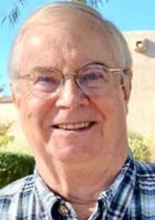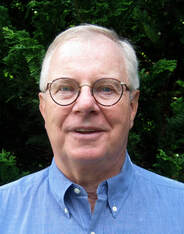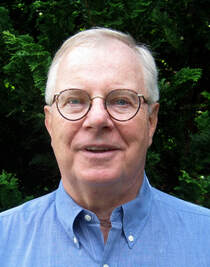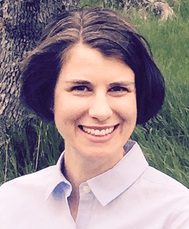 Peter Gow Peter Gow I am a small-town boy, and thus I have seen my share of small-town Fourth of July parades—the Scout troops, the emergency vehicles, the fire department drum and bugle corps. It’s hard not to be a least a little bit moved by the spirit of volunteerism and community engagement that all the floats and marching groups embody. It is the spirit of America harkening right back to the days of de Tocqueville and even the Sons of Liberty. A feature of these parades that I’ve enjoyed, and sometimes cringed at, are the representations of local history. On the Glorious Fourth these can tend toward the triumphalist and exaggerated, but we small-towners like to note our sesquicentennials, tricentenaries, “first” settlers (with indigenous populations too often forgotten, alas), Oldest Residents (how many towns still have their Lincoln Cane?), civic and fraternal organizations, and sometimes even lost industries. Even the antique tractors (my personal favorite, always) are their own kind of history. As a history teacher myself in days of yore I often tried to tie local and regional history into whatever topic I was teaching, and I have paraphrased one of my former student’s congressional grandfather by offering my own adage, “All history is local history.” It was interesting to ask students to do a bit of research on their own communities during, say, the Civil War epoch or even the Great Depression—to see how these textbook events affected real people in their own neighborhoods. I confess that I was brought up short this Fourth of July to read a reference to the holiday as Independence Day; I have become all too accustomed to thinking of it as just a date, a calendar marker proclaiming “Summer!” But the events it commemorates were not about parades and hot dogs but rather independence: the shedding of external, imperial constraints to better meet the needs of the colonists. We can argue about privilege and whose voices were and were not represented in 1776, but the story line ought to be familiar to educators in 2016 as we work to create educational programs built on modern, democratic principles that will serve the students we have in our own classrooms based on the missions and values of our own schools. Whether the external forces be test-building behemoths, Texas-driven textbooks, the shadow of the Common Core (regardless of whether it’s a good thing or a bad thing), state testing mandates, or merely the fraught college admission landscape and our perceptions of its imperatives (nudged gently into states of greater fear and complicity by the voiced anxieties of families and students), there have been generations of pressure on schools and their curricula to fall into line with a vast external design whose outlines may be dim but whose effects are stark—and all too often stultifying. (And who among us has not at least once referred to some of these constraining forces as an “evil empire”?) The ICG’s Principles of Independent Curriculum may not ring likethe Declaration of Independence, but they are at least an analogue, our ideals for the creation of each school’s own autonomous, mission-informed approach to teaching and learning, tailored to the requirements of its own students. We’re proud of them and like to think that they are inspiring, thoughtful, and above all useful. Independence Day, the holiday, brought home to me that there is a kind of corollary to the idea of “independent curriculum”: the concept that there can be no more independent a curriculum than one that draws on its natural, social, cultural, and historical environment—place-based education, if you will. Perhaps because my neighbor is executive director of a sparkling regional resource (the Lake Champlain Maritime Museum) and because over the hill from my current location is North Country School, of which I have written elsewhere, learning with local roots is on my mind these days. The place-based curricula that schools and cultural and historical organizations create is, by definition, about as independent as curriculum can be. I once blogged about the good things that can happen when schools embrace place—when Our Town Country Day makes an effort to be Our Town’s Country Day—and so as the memory of Independence Day 2016 fades, I want, on behalf of the ICG, to put out a general inquiry as to the state of place-based learning, as independent curriculum, in our schools today. What is happening at your school or in your organization that supports the idea of place-based learning and that exemplifies in its way an independent approach to curriculum in ways that align with both the ICG’s Principles and, dare I say, the Declaration of Independence itself? Whether you see “place-based learning” as a throwing off of shackles or from a more affirmative perspective, how do your history, art, literature, science, language, and even mathematics programs reflect not just your school’s ethos but the very place in which your school is situated? How can engaging with one’s locale ignite their interest and activity? Perhaps down the road there might be an ICG conference or symposium—certainly some webinars and podcasts—on Independent Curriculum and Place-Based Learning. We might even kick such an event off with a parade.
0 Comments
 Peter Gow Peter Gow I am a small-town boy, and thus I have seen my share of small-town Fourth of July parades—the Scout troops, the emergency vehicles, the fire department drum and bugle corps. It’s hard not to be a least a little bit moved by the spirit of volunteerism and community engagement that all the floats and marching groups embody. It is the spirit of America hearkening right back to the days of de Tocqueville and even the Sons of Liberty. A feature of these parades that I’ve enjoyed, and sometimes cringed at, are the representations of local history. On the Glorious Fourth these can tend toward the triumphalist and exaggerated, but we small-towners like to note our sesquicentennials, tercentenaries, “first” settlers (with indigenous populations too often forgotten, alas), Oldest Residents (how many towns still have their Lincoln Cane?), civic and fraternal organizations, and sometimes even lost industries. Even the antique tractors (my personal favorite, always) are their own kind of history. As a history teacher myself in days of yore I often tried to tie local and regional history into whatever topic I was teaching, and I have paraphrased one of my former student’s congressional grandfather by offering my own adage, “All history is local history.” It was interesting to ask students to do a bit of research on their own communities during, say, the Civil War epoch or even the Great Depression—to see how these textbook events affected real people in their own neighborhoods. I confess that I was brought up short this Fourth of July to read a reference to the holiday as Independence Day; I have become all too accustomed to thinking of it as just a date, a calendar marker proclaiming “Summer!” But the events it commemorates were not about parades and hot dogs but rather independence: the shedding of external, imperial constraints to better meet the needs of the colonists. We can argue about privilege and whose voices were and were not represented in 1776, but the story line ought to be familiar to educators in 2016 as we work to create educational programs built on modern, democratic principles that will serve the students we have in our own classrooms based on the missions and values of our own schools. Whether the external forces be test-building behemoths, Texas-driven textbooks, the shadow of the Common Core (regardless of whether it’s a good thing or a bad thing), state testing mandates, or merely the fraught college admission landscape and our perceptions of its imperatives (nudged gently into states of greater fear and complicity by the voiced anxieties of families and students), there have been generations of pressure on schools and their curricula to fall into line with a vast external design whose outlines may be dim but whose effects are stark—and all too often stultifying. (And who among us has not at least once referred to some of these constraining forces as an “evil empire”?) The ICG’s Principles of Independent Curriculum may not ring like the Declaration of Independence, but they are at least an analogue, our ideals for the creation of each school’s own autonomous, mission-informed approach to teaching and learning, tailored to the requirements of its own students. We’re proud of them and like to think that they are inspiring, thoughtful, and above all useful. Independence Day, the holiday, brought home to me that there is a kind of corollary to the idea of “independent curriculum”: the concept that there can be no more independent a curriculum than one that draws on its natural, social, cultural, and historical environment—place-based education, if you will. Perhaps because my neighbor is executive director of a sparkling regional resource (the Lake Champlain Maritime Museum) and because over the hill from my current location is North Country School, of which I have written elsewhere, learning with local roots is on my mind these days. The place-based curricula that schools and cultural and historical organizations create is, by definition, about as independent as curriculum can be. I once blogged about the good things that can happen when schools embrace place—when Our Town Country Day makes an effort to be Our Town’s Country Day—and so as the memory of Independence Day 2016 fades, I want, on behalf of the ICG, to put out a general inquiry as to the state of place-based learning, as independent curriculum, in our schools today. What is happening at your school or in your organization that supports the idea of place-based learning and that exemplifies in its way an independent approach to curriculum in ways that align with both the ICG’s Principles and, dare I say, the Declaration of Independence itself? Whether you see “place-based learning” as a throwing off of shackles or from a more affirmative perspective, how do your history, art, literature, science, language, and even mathematics programs reflect not just your school’s ethos but the very place in which your school is situated? How can engaging with one’s locale ignite their interest and activity? Perhaps down the road there might be an ICG conference or symposium—certainly some webinars and podcasts—on Independent Curriculum and Place-Based Learning. We might even kick such an event off with a parade.  Peter Gow Peter Gow We aren’t interested in jumping on a bandwagon just because it’s moving in a direction we want to go, too, but re-reading the National Council of Teachers of English statement affirming #BlackLivesMatter has inspired me to add the ICG’s two cents to this critical national conversation. It might seem like a long way between helping schools build their own capacity in curriculum and assessment design and speaking out on behalf of racial and social injustice, but we don’t see it that way. In creating learning environments and experiences that are responsive to the needs of kids, the ICG has been and will continue to be explicit about the place of equity and justice in this work. Effective curriculum, we know, is also curriculum that students see as relevant, and in 2016 there isn’t anything more relevant, and more urgent, than making sure that schools prepare students to live in a world characterized by both diversities of many kinds and ubiquitous inequity and injustice. If we can’t provide material restitution for the crimes and depredations of the past, we can provide some cultural and intellectual recompense by teaching about the past in ways that are honest and that do not deny the emotional, social, and economic impact of our history and the attitudes that formed its framework. Nor can we ignore or gloss over the events that shake our society today—or at least capture the attention of the news media, even if change seems slow in coming—when these events represent the world occupied by our students, their families, and ourselves. #BlackLivesMatter in the real world, and they must matter in the classroom as a topic of earnest, open discourse. As educators we have a deep moral obligation in which black lives, and all of the lives underrepresented in our textbooks and in our leadership (political, social, cultural, economic, and —yes—educational), matter as much as the lives of the popular, wealthy, and powerful whose stories still overwhelmingly dominate our textbooks and our curricula in every discipline. It’s overly simplistic, but the strongest meme I’ve encountered for explaining the significance of #BlackLivesMatter showed up on Facebook. I’ve now seen a couple of different versions, so I’ll just share this one, posted by Ethan Ferrer: A family sits down for dinner. One of the children, Johnny, has an empty plate. Johnny says #johnnydeservesfood. His family looks up, shrugs, and says #everyonedeservesfood and then proceeds to munch away happily. The family isn’t wrong. Certainly everyone does deserve food. And Johnny isn’t saying #onlyjohnnydeservesfood. He’s saying that he, as well as his family, deserves food, but right now he has no food. And by making statements that #everyonedeservesfood, the family can feel better eating their food so they can ignore the real problem which is: Johnny has no food. hose who reject #BlackLivesMatter are probably going to reject its purpose no matter how well explained its premise may be, but for those who struggle to articulate or grasp the distinction between the urgency of #BlackLivesMatter and the sanctimonious, self-evident (but not urgent in the same way) nostrum that “all lives matter,” this one seems pretty clear.
Principle VI of the ICG’s Principles of Independent Curriculum states that: Independent curriculum recognizes the variety of students’ cultural perspectives and experiences. It proceeds from the premise that preparation for life and work in a diverse and connected world demands learning experiences that acknowledge and include multiple perspectives in the quest for a future defined by justice and equity. However, the ICG does not believe that the moral imperatives of “independent curriculum” stop there. Wellness, creativity, and balance also carry, we believe, not just the implication but the mandate that schools must be responsive to the needs and interests of students and must represent and invite thorough exploration of the worlds they occupy. These needs are not defined simply by the lower strata of Maslow’s Hierarchy but encompass, and must be understood as encompassing, the higher strata of love, belonging, self-esteem, and self-actualization—not as feel-good sops but as the central elements of fully developed ethical humanity. Good teachers and good schools recognize this mandate and create programming accordingly. But in the age of #BlackLivesMatter, endless war, and rampant demagoguery, as educators we need to throw ourselves with greater energy than ever into the battle for social justice as the essential fight for our time. It’s not just about movements; it’s about a future worth living for.  Corinne Dedini, Director of Academics Corinne Dedini, Director of Academics Faculty professional development is a critical cog in the wheel of annual school initiatives. We send cohorts of teachers off to AP training or the Stanley King Counseling Institute; we bring in a consultant to revamp our schedule and teach us how to teach in the new block rotation; we read a book on brain-based learning and report back monthly on how it’s changing our class routine. But the proverbial wheel only has so many cogs, and every wheel’s cogs are different. That’s why we’re giving up the faculty theme at One Schoolhouse this year. Our three-year buildup to the personalization of our pedagogy was done on the annual faculty theme model – starting with the student-teacher relationship, then formative assessment, and finally student agency. But now that we know what we know about personalized learning, I sure would do it differently. You see, each one of us has different strengths—what Robert Brooks calls our islands of competence—and different growth goals. These starting points, unique to each teacher, are antithetical to the annual theme approach to school-wide professional development. One-size-fits-most PD is also the opposite of what we believe about learning: namely, that it should be personalized to the learner’s strengths and goals. So now we walk our talk. What does it mean to personalize professional learning for teachers? We start with establishing the baseline expectations for course design/delivery and teacher competencies, clearly communicated in an open-ended rubric format so that teachers can both evaluate whether they meet baseline expectations and set a trajectory for their growth over the summer course refresh and the yearlong course facilitation. We give teachers time and space—including access to resources and one-on-one support—to reflect, reimagine, and redesign. As they refresh and then deliver their courses, they share milestones, measure progress, and process through challenges—all at the pace and scope that we agreed to when we set their personal plan for the year. Because the professional learning experience is designed backwards from what the teachers need and choose to do to improve their courses, they are energized by the efficiency and relevance of the model. And guess what? The wheels are spinning smoothly! |
Don't miss our weekly blog posts by joining our newsletter mailing list below:AuthorsBrad Rathgeber (he/him/his) Archives
July 2024
Categories |

 RSS Feed
RSS Feed